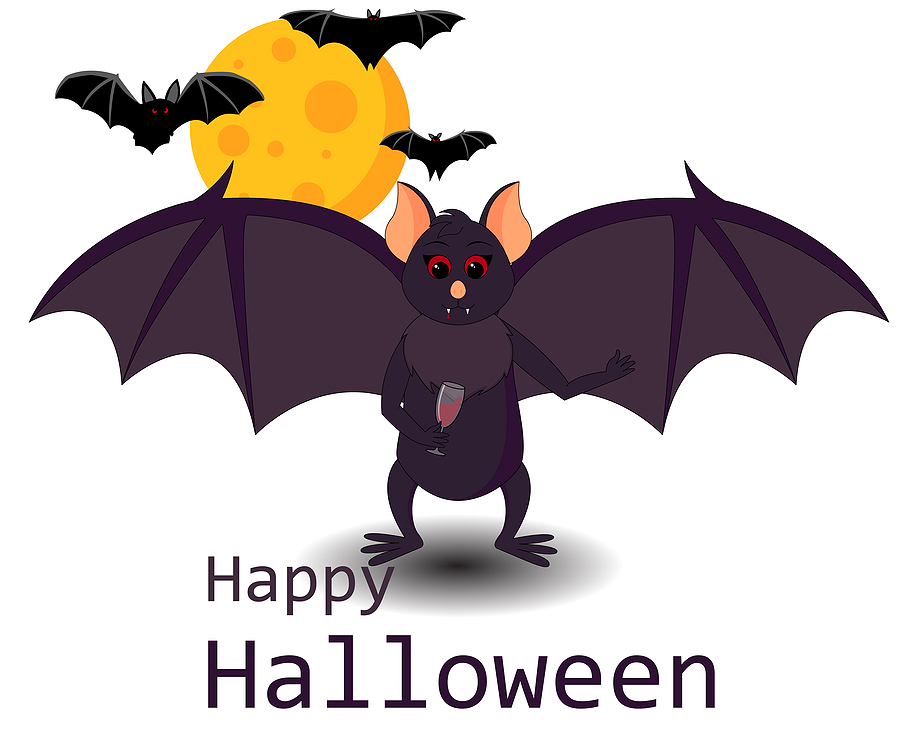There are many popular misconceptions about bats. They are often portrayed as sinister creatures of the night, associated with darkness and death. Perhaps one of the most misunderstood bat species with a bad rep is the Vampire bat, mostly due to its unfortunate and misleading moniker.
So, for a Halloween treat this year, let’s take a closer look at Vampire bats and learn some freaky fun facts about them!

Clearing Up the Myths About Vampire Bats
Vampire bats are small, winged mammals that live in Central and South America. There are three species of vampire bat, all of which are relatively small. The largest of these, the Common Vampire Bat (Desmodus rotundus), has a body length of around 3.5 inches (9 cm) and a wingspan of up to 8.5 inches (22 cm). The other two species, the White-Winged Vampire Bat (Diaemus youngi) and the hairy-legged vampire bat (Trachops cirrhosus), are both slightly smaller.
Vampire bats are found in tropical and subtropical areas of Central and South America. Common vampire bats inhabit a wide range of habitats, including rainforests, savannas, and even urban areas. White-winged vampire bats are found primarily in forested areas, while hairy-legged vampire bats prefer more open habitats such as grasslands. All three species of vampire bat are nocturnal, meaning that they are most active at night. During the day, they roost in dark, sheltered areas such as caves, trees, or buildings.
Vampire Bats Do Not Suck Blood
These bats are unique in that they feed primarily on blood, which they obtain by biting their victim’s skin and licking the blood that flows from the wound. Though they are capable of feeding on other animals, vampires prefer to dine on livestock such as cows and chickens. Vampire bats have a number of adaptations that enable them to feed on blood. Their sharp teeth are perfect for puncturing skin, and their saliva contains an anticoagulant that prevents the blood from clotting. They also have a special heat-sensing ability that allows them to locate warm-blooded prey in the dark.
Despite their reputation, vampire bats are fascinating creatures that play an important role in the ecosystems where they live. By feeding on blood, they help to control the populations of their prey animals. They also play a part in the dispersal of seeds and pollen, as they often defecate while in flight. As a result, vampire bats play an important role in the maintenance of healthy ecosystems.
Risk of Disease
Though they are capable of spreading disease, vampire bats are not considered to be a major public health concern. The diseases that they can transmit, such as rabies, are relatively rare. In addition, vampire bats typically only feed on animals, and so the risk of them transmitting disease to humans is considered to be low.
The Importance of All Bat Species
There are many popular misconceptions about bats. They are often portrayed as sinister creatures of the night, associated with darkness and death. However, bats are actually incredibly interesting and important animals. There are over 1,200 species of bats in the world, making them the second largest group of mammals (after rodents). They are found on every continent except Antarctica and can live in a wide variety of habitats, from rainforests to deserts. Bats play an important role in many ecosystems, serving as pollinators and seed dispersers as well as helping to control insect populations.
Despite their importance, bats are often misunderstood and feared. In many cultures, they are associated with darkness, death, and evil. This negative portrayal of bats is unjustified and can lead to real harm. Bats are vital to the health of our planet, and we should do everything we can to protect them.
Are you dealing with a nuisance bat problem on your property and need to get rid of them fast? Contact Smoky Wildlife Control at 615-610-0962 for prompt and professional bat removal and control in Nashville, Tennessee and Clarksville, TN. We serve commercial clients, as well.
Related Posts:
Can a Bat Give My Dog Rabies?
FAQS About the Deadly Bat Disease Known as White Nose Syndrome
You Might Have Bats in the Attic If
